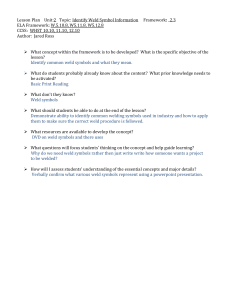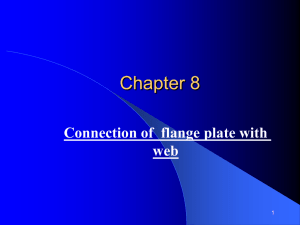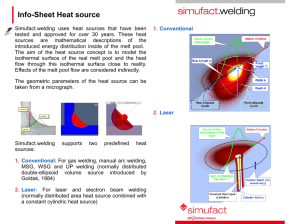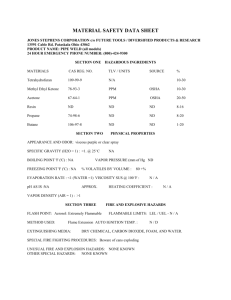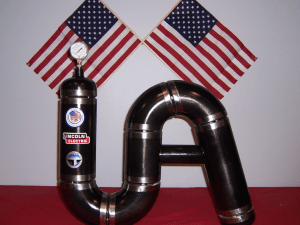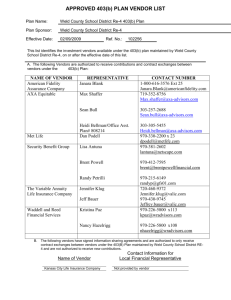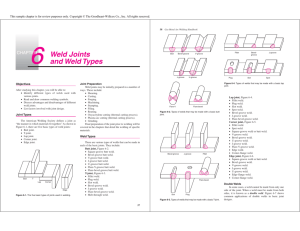General Comments
advertisement
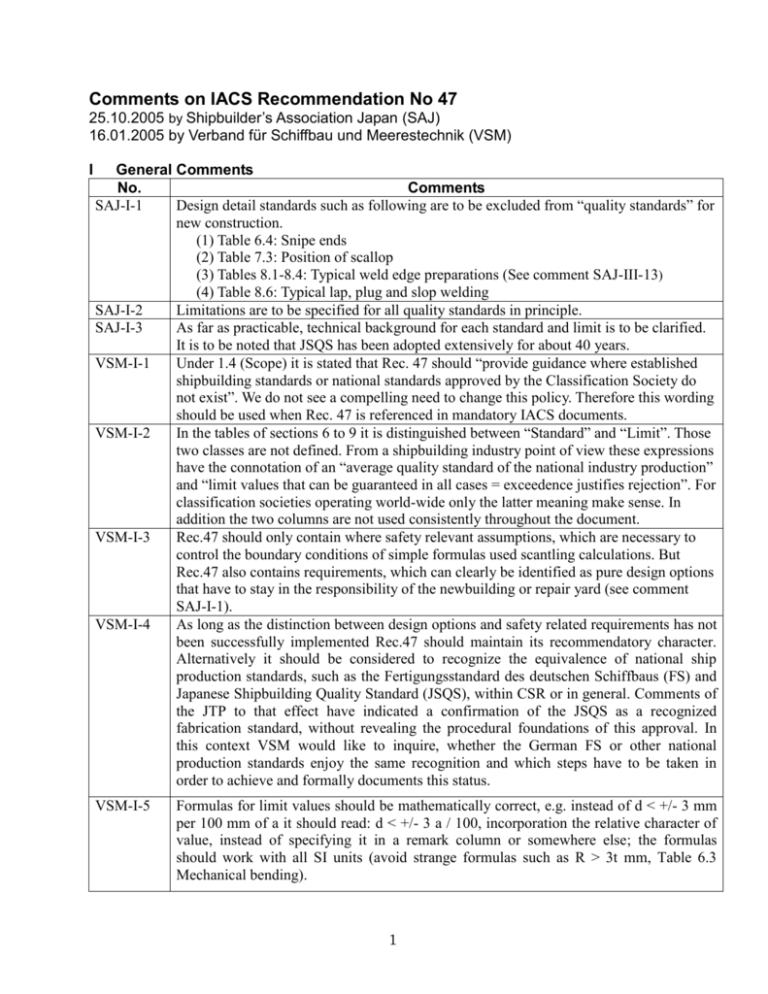
Comments on IACS Recommendation No 47 25.10.2005 by Shipbuilder’s Association Japan (SAJ) 16.01.2005 by Verband für Schiffbau und Meerestechnik (VSM) I General Comments No. Comments SAJ-I-1 Design detail standards such as following are to be excluded from “quality standards” for new construction. (1) Table 6.4: Snipe ends (2) Table 7.3: Position of scallop (3) Tables 8.1-8.4: Typical weld edge preparations (See comment SAJ-III-13) (4) Table 8.6: Typical lap, plug and slop welding SAJ-I-2 Limitations are to be specified for all quality standards in principle. SAJ-I-3 As far as practicable, technical background for each standard and limit is to be clarified. It is to be noted that JSQS has been adopted extensively for about 40 years. VSM-I-1 Under 1.4 (Scope) it is stated that Rec. 47 should “provide guidance where established shipbuilding standards or national standards approved by the Classification Society do not exist”. We do not see a compelling need to change this policy. Therefore this wording should be used when Rec. 47 is referenced in mandatory IACS documents. VSM-I-2 In the tables of sections 6 to 9 it is distinguished between “Standard” and “Limit”. Those two classes are not defined. From a shipbuilding industry point of view these expressions have the connotation of an “average quality standard of the national industry production” and “limit values that can be guaranteed in all cases = exceedence justifies rejection”. For classification societies operating world-wide only the latter meaning make sense. In addition the two columns are not used consistently throughout the document. VSM-I-3 Rec.47 should only contain where safety relevant assumptions, which are necessary to control the boundary conditions of simple formulas used scantling calculations. But Rec.47 also contains requirements, which can clearly be identified as pure design options that have to stay in the responsibility of the newbuilding or repair yard (see comment SAJ-I-1). VSM-I-4 As long as the distinction between design options and safety related requirements has not been successfully implemented Rec.47 should maintain its recommendatory character. Alternatively it should be considered to recognize the equivalence of national ship production standards, such as the Fertigungsstandard des deutschen Schiffbaus (FS) and Japanese Shipbuilding Quality Standard (JSQS), within CSR or in general. Comments of the JTP to that effect have indicated a confirmation of the JSQS as a recognized fabrication standard, without revealing the procedural foundations of this approval. In this context VSM would like to inquire, whether the German FS or other national production standards enjoy the same recognition and which steps have to be taken in order to achieve and formally documents this status. VSM-I-5 Formulas for limit values should be mathematically correct, e.g. instead of d < +/- 3 mm per 100 mm of a it should read: d < +/- 3 a / 100, incorporation the relative character of value, instead of specifying it in a remark column or somewhere else; the formulas should work with all SI units (avoid strange formulas such as R > 3t mm, Table 6.3 Mechanical bending). 1 II Typographical Errors No. Item SAJ-II-1 Table 6.7 Breadth and length of top plate of engine bed VSM-II-1 Table 6.7 Length between perpendiculars SAJ-II-2 Table 6.11 All standards and limits VSM-II-2 Table 8.5 Butt weld toe angle… VSM-II-3 Table 8.5 Fillet weld leg length SAJ-II-3 SAJ-II-4 Table 8.6 Table 9.3 Fillet weld in lap joint Position of scallop SAJ-II-5 Table 9.6 Tee fillet III Corrections Limit: +/- 6mm Standard: +/- 50 mm per 100 m Numerators in the formulas should include “l” (span), e.g., 2 x “l” /1000 …and weld overfill (check also distribution to Standard / Limit column) Definitions should not be placed in the Detail or Remarks and not in the Standard column b >= 2t2+25 A starting point of the distance “d” is to be the right end of the scallop. “5mm<G<16mm” may be “5mm<G<16mm or 1.5t”. Comments on Individual Standards No. Item Comments SAJ-III-1 4.3.6.2 Weld spatters (1) Not only by grinder, but also other methods are to be accepted, e.g. scraping, chipping. (2) As spatters do not relate to structural strength but coating, applicable areas are not necessary to be defined. SAJ-III-2 5.1 & 5.2 Gas cutting (1) It is not reasonable to change the standard of roughness of gas cut surfaces depending on cutting method/facility? (2) Why the standard is changed at 20mm in thickness? VSM-III-1 Table 6.1 Breadth of Are Rec.47 and JSQS limiting the absolute or relative flange breadth? SAJ-III-3 Table 6.2 Distortion of The standard is to be related with the span of stiffeners. face plate SAJ-III-4 Table 6.3 Each size of (1) The standard is to be applied at the end and mid span corrugation parts of the corrugation only. Breadth of (2) To be deleted because dimensional error can be corrugation controlled by total breadth and depth practically. web VSM-III-2 Table 6.3 Breadth of VSM agrees to SAJ-III-4(2), if breadth is specified the corrugation limit value should be the double value of for the breath of web corrugation tolerance SAJ-III-5 Table 6.4 Tripping (1) The standard background is to be clarified. brackets (2) The limit is to be related with the thickness (Ref to JSQS). VSM-III-3 Table 6.4 Tripping VSM agrees to SAJ-III-5(2) brackets VSM-III-4 Table 6.4 Snipe end This is just a design option and safety related 2 SAJ-III-6 Table 6.6 Block assembly (1) The standards of L and B are too severe compared with JSQS. (2) Technical background is to be clarified. To be illustrated to avoid misunderstanding. SAJ-III-7 Table 6.7 SAJ-III-8 Table 6.10 SAJ-III-9 Table 6.11 SAJ-III-10 Table 7.1 SAJ-III-11 Table 7.2 SAJ-III-12 Table 7.3 SAJ-III-13 Tables 8.1-8.4 Special sub assembly Fairness of (1) The second illustration to be deleted because the plating deflection can be measured for only single amplitude between frames practically. (2) Technical background is to be clarified. Fairness of Technical background is to be clarified. plating with frames Alignment of The second illustration is to be deleted because when the butt weld upper surfaces of two plates are in line with base line, no misalignment exists. Alignment of (1) Different standards are to be provided for significant fillet welds structural members and other structural members following JSQS. (2) Use of the centerline of plate thickness to determine the misalignment value is not practical at site and to be limited only to critical area from fatigue strength aspect. Alignment of Limit is necessary. (Ref to JSQS) lap welds Gap between The standard is unrealistically severe and limit is beams and necessary. (Ref to JSQS) frames Gap around Limit is necessary. (Ref to JSQS) stiffener cut-off Weld edge 1) General comments: preparation (1) These standards are part of design detail standards. (2) These are to be general recommendation and to be modified by the individual shipyards under the approval of the classification society before construction as part of standard welding procedures, because edge configuration cannot be separated from the combination of welding facility, composition of welding wire, shield, electric current, etc. (3) Although Note 1 states some explanation, much more clear explanation is necessary to define the nature of these standards. (4) Subject tables contain unreasonable quantitative figures which can not conform to the modern fabrication facilities/technologies. In the case there is no strength problem, such figures should be updated even though subject tables are to be changed into general recommendation purposes. 3 VSM-III-5 Tables 8.1-8.4 Weld edge preparation SAJ-III-13 Tables 8.1-8.4 Weld edge preparation SAJ-III-14 Table 8.5 Butt weld toe angle Butt weld undercut Fillet weld undercut Fillet weld in lap joint Distance between welds Weld edge preparation SAJ-III-15 Table 8.6 SAJ-III-16 Table 8.7 VSM-III-6 Table 8.8 SAJ-III-17 Table 9.1 SAJ-III-18 Table 9.1 SAJ-III-19 Tables 9.4 & 9.5 Weld edge preparation SAJ-III-20 Table 9.9 SAJ-III-21 Table 9.11 SAJ-III-22 Table 9.13 Fillet weld toe angle Holes made erroneously D<200mm Weld spatters Alignment of butt joints Alignment of fillet weld VSM agrees to SAJ-III-13, the weld edge preparations are design option which should be chosen in accordance with manufacturing process chosen; not safety related 2) Detail comments (Ref to JSQS): (1) Bevel angle are to be deleted from all standards. (2) Limits are to be provided for root gaps 3) Miscellaneous comments Does manual welding include semi-auto CO2 welding? (1) The standard of the angle is to be 90 degrees. (See Table 9.9) (2) The standard of the height of weld metal is to be deleted. (1) The standard D=0 mm and the limit 0.5mm are not realistic and are to follow JSQS. (2) This table and Table 9.9 (repair standards) may be combined in one table. A note “not applicable to collar plates” is to be provided in Remarks column. Different standards for significant and other structural members are necessary. (Ref to JSQS). The weld edge preparations are design option which should be chosen in accordance with manufacturing process chosen; not safety related A note “t1 is lesser plate thickness” is added in Remark column. (1) Use of the centerline of plate thickness to determine the misalignment value is not practicable at site and to be limited only to critical area from fatigue strength aspect. (2) The meaning of “release and adjust over a minimum of 50a” is not clear. (1) As the standards are severer than JSQS, the values are to follow JSQS (2) When the gap is more than 25mm, the condition of “1.5 x t” is provided. These double limitations are not necessary. Standards of short beads are to be specified for different strength and grades of steel. (1) The minimum diameter 300mm that allows using an insert plate is to be changed to 200mm following JSQS. (1) A note stating that the standard is not applicable to spaces in which coating is not required is to be provided. 4 Arc strike (1) In addition to grinding, other methods are to be allowed, such as overlapped weld bead or a tag piece that are struck by the first arc and cut off after completion of welding. (2) The standard is to be applied only for high tensile steels. ***** 5

